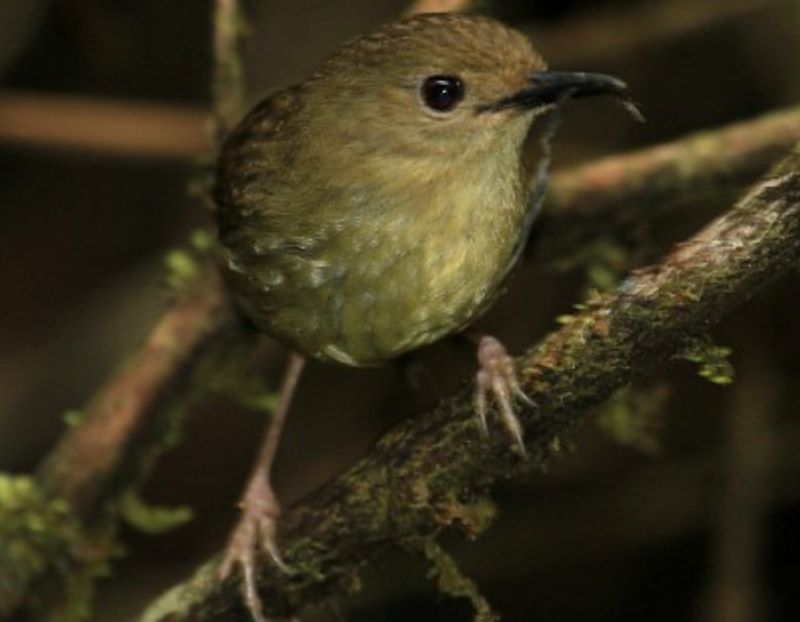Family: The Atherton Scrubwren (Sericornis keri) belongs to the family Acanthizidae
Habitat: There is now a widespread understanding that a second species of plain brown scrubwren inhabits the mountain rainforests of northeastern Queensland, which was previously mistaken for large-billed scrubwrens. It was even first described as a race of the large-billed, although in 1927, G.M. Mathews changed his mind.
An expedition by the British Museum proved the point by rediscovering and collecting the species in 1964. Today, Atherton Scrubwrens are known from most mountaintop rainforests in northeastern Queensland above 800 meters in altitude, from the Windsor Tableland to the Paluma Range. Atherton Scrubwren prefers natural habitats such as tropically moist lowland forests and subtropical or tropically moist montane forests.

Identification: Both sexes are similar. The upper parts are from crown to wings, and the tail is deep, flat brown. The face is deep, flat brown, barely paler than the crown. The underparts are from chin to crissum, cream-buff washed pale yellow, breast faintly streaked in males, and undertail olive-tan. The eyes are deep red. The bill is dusky. The feet are pale flesh. The immature bird (as an adult) is duller and has brown eyes.
Behavior: Atherton Scrubwrens are a little bigger than the Large-billed and distinctively longer and heavier in ‘leg’, a trait reflecting their more terrestrial niche. They are also browner, less olive on the back, darker on the face, and washed faintly but clearly yellow from throat to belly; some males have faint breast streaks.
But the differences are slight, and the species is easily confused. They are perhaps easier or more difficult to identify by their behavior and ecology. Whereas large-billed scrubwren’s forage in pairs or small groups mainly in the forest mid-stage, down to a meter above the ground, Atherton scrubwrens are more solitary and feed more on their own within a meter or two of the ground.
There they hop-search slowly, quietly, and methodically over logs, up into the branchlets of low shrubbery, and down onto the litter of the forest floor. Mainly insects and small snails are gleaned as they go, the birds moving on foot and limiting flight to short flits from log to shrub or shrub to ground. Sedentary birds, like Atherton Scrubwren’s, also build nests close to the ground, and, judging by their solitary nature, established pairs may hold permanent territory.
Distribution: This Tasmanian bird is found in the mountain rainforests of northeastern Queensland, from Windsor Tableland to the Paluma Range, not below 600–650 meters.
Vocalizations: Atherton Scrubwren calls are like churring alarms. However, the song has not been described yet.
Nesting and breeding: Atherton Scrubwren nesting and breeding occur in August–December. The nest is domed, like that of a large-billed scrubwren, 150 x 125 mm externally. They construct nests on the bank using fibrous plant material that is lined with feathers and placed close to the ground, well concealed by foliage.
Eggs: Atherton Scrubwren lays two eggs: pale purplish white, finely speckled dark brown, forming a zone at the large end; swollen oval, about 20 x 15 mm.
Size: The Atherton Scrubwren size measures about 120–135 mm in length.
Races: There are no races.
Status: The population is stable.
Read More: Diamond dove (Geopelia cuneata)







